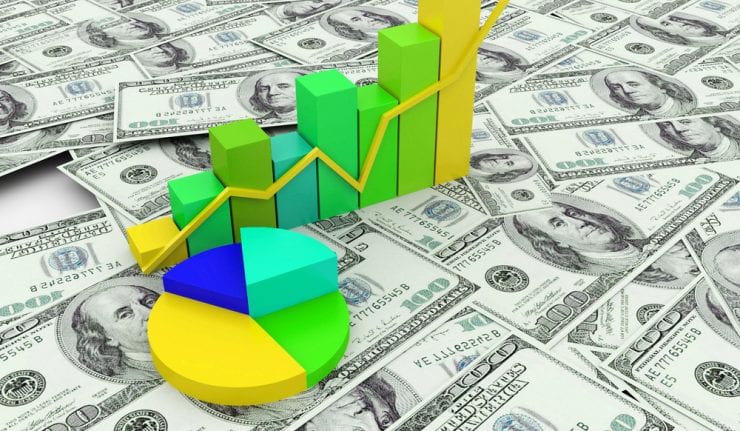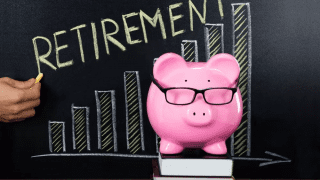By: Bruce Miller, CFP®
In my previous article, I provided some basic consideration for selecting dividend-income-generating equities and identified the five criteria that I consider most important. I will provide additional details and explanation for each of the criteria over the next few articles, starting with the dividend yield in this article.
To be a contender as a long-term reliable income source, a security must have a minimum yield that will provide the required household income. A stock or bond can have the most reliable income dividends in the history of humanity, but if it does not provide sufficient income, it will not work as an income security.
The best way to determine the required yield is to do a household income analysis, as we did earlier for Ariel and Lee. Their analysis shows that to use the pure income approach, they require an average portfolio yield of 4.8%. While this level of yield can be achieved, it will require higher-yielding securities such as low-income growth utilities, preferred stock, equity real estate investment trusts (REITs) and moderate risk master limited partnerships (MLPs) or higher-risk, dividend-paying C-Corporation stocks. First, I will discuss how to construct the income-generating portfolio using a mix of income securities. Afterwards, we will look at how to mix individual security yields to arrive at a target income portfolio yield. I do not want to jump too far ahead but generally each income class has a yield range that we can expect over the long term. Below is a list organized by those income classes and grouped by the expected reliable yield.
| – C-Corporations: | 3 to 5% |
| – Utilities: | 3.5 to 6% |
| – MLPs: | 4 to 7% |
| – Equity REITs: | 3 to 6% |
| – Preferred Stock/ Exchange Traded Debt: | 6.5 to 8% |
| – Individual Bonds: | 3 to 4% |
Generally, we are looking for yields in the ranges listed above for the particular income class. The yields that fall below the range will not be sufficient for most income investors and yields that are above the preceding ranges generally carry too much income risk.
Please note that this grouping into classes is by yield range and this range certainly will shift up or down over economic cycles. I will discuss at a later stage another expected yield grouping – by income group – which is done for purposes of managing income risk.
Dividend Yield
How exactly do we calculate a yield? This is mostly commonly done by taking the most recent quarterly dividend and multiplying it by four – or multiplying it by 12, if the dividend is paid monthly and dividing by the current share price. Another method is the 12 month yield, calculated by adding together the most recent 4 quarterly dividends or most recent 12 months of dividends for monthly dividend payers, and dividing by the current price.
The preceding example assumes a stable quarterly or monthly dividend that is fixed (such as with preferred stock) or increases periodically. However, the periodic dividend payouts for some types of equities, such as bond mutual funds, Business Development Companies (BDCs) or Royalty Trusts vary from period to period. There are multiple methods to calculate the yield for these types of equities.
One approach is to take the annual dividend for each of the past few years and the total dividend paid to date for the current year. To calculate the annualized total dividend amount for the current year, do the following:
- Divide the sum of all dividends received so far for the current year by 1 minus the fraction of the year’s dividends yet to be paid.
- For example, assume a stock has paid five of its monthly dividends and these payments equal $0.75. To annualize, divide 0.75 by (1 – 7/12) = 0.75/0.4167 = $1.80 annualized.
- Divide each year’s total dividend by the current share price and look at the yield’s trend.
- If the trend of the total annual amounts of these uneven dividends is upward, then you can use this year’s annualized dividend yield as your projected yield.
- If yields are declining, you should probably decline the annualized yield for this year.
- For example, if the annual dividend of the potential equity has been declining by 2% per year and last year’s dividend was $1.00 per share, it would be reasonable to reduce the current year’s annualized dividend by 2% to $0.98 and divide this by the current share price to get its current yield.
This is just a brief overview of the dividend yield and two basic methods to calculate it. Yield information is easy to access since most websites that provide financial information will have the dividend yield included as one of the key metrics in the main section or the summary for a security. Some of the other criteria we will discuss are not as straight forward. In the next article, I will move to the next criteria on the list and discuss dividend history.

Bruce Miller is a certified financial planner (CFP) who also is the author of Retirement Investing for INCOME ONLY: How to invest for reliable income in Retirement ONLY from Dividends and IRA Quick Reference Guide.




